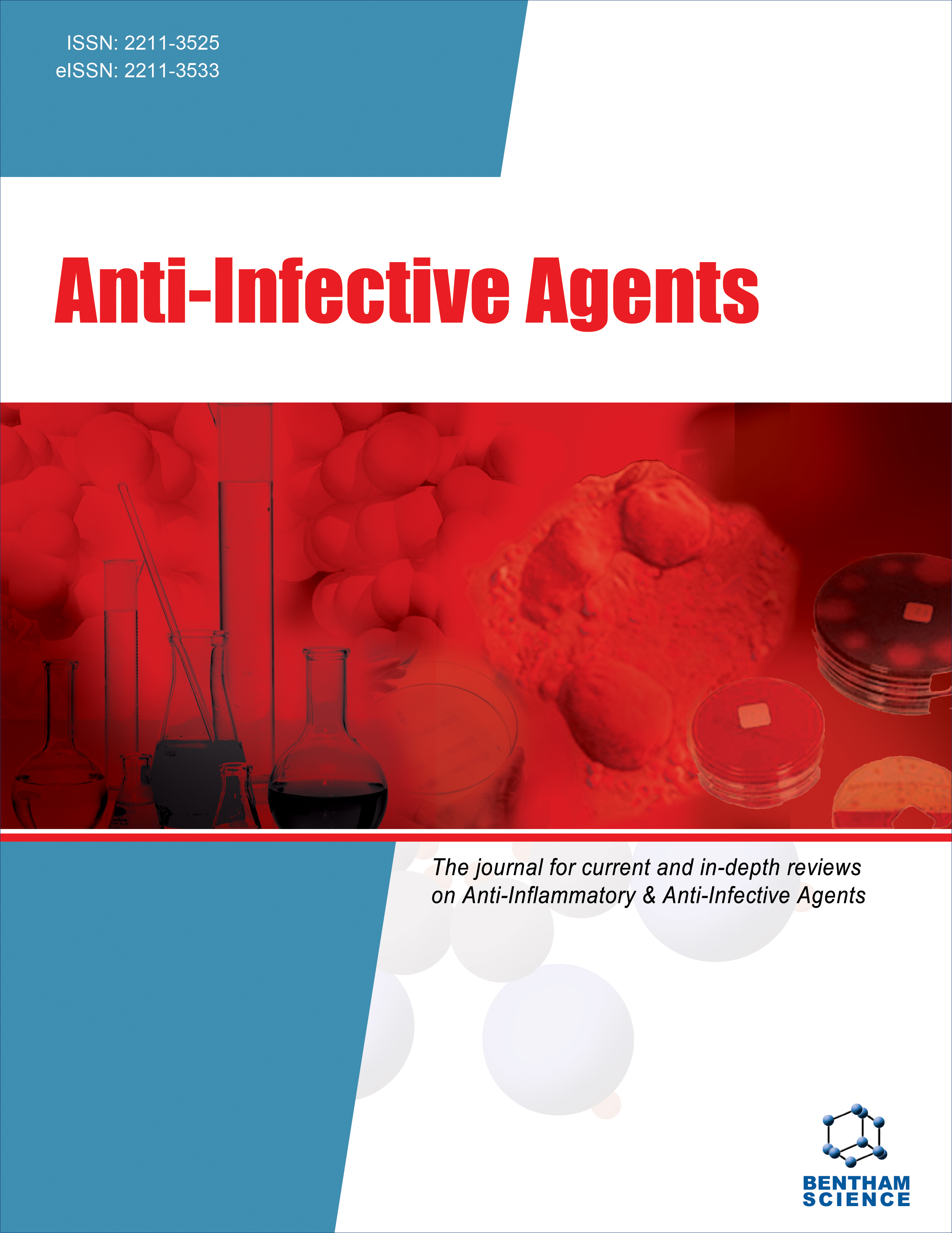-
s New Trypanosoma cruzi Trypanothione Reductase Inhibitors Identification using the Virtual Screening in Database of Nucleus Bioassay, Biosynthesis and Ecophysiology (NuBBE)
- Source: Anti-Infective Agents, Volume 17, Issue 2, Aug 2019, p. 138 - 149
-
- 01 Aug 2019
Abstract
Background: American trypanosomiasis, also known as Chagas disease, is caused by the protozoan Trypanosoma cruzi (T. cruzi) and affects approximately 10 to 12 million, primarily in Latin America. Since its discovery in 1909, there is no effective treatment for its chronic phase, with benzonidazole being the only anti-trypanosoma drug used in Brazil, despite the absence of conclusive evidence to prove its efficacy and safety. Thus, it is necessary to develop new drugs that are more effective and selective against Trypanosoma cruzi. Methods: The T. cruzi enzyme Trypanothione Reductase (TcTR) is a validated target for the discovery of new antiprotozoal compounds and we employed the Virtual Screening technique on the database of Nucleus of Bioassays, Biosynthesis and Ecophysiology (NuBBE), aiming to search for new chemical moieties against T. cruzi. From these we selected the 10 best ligand energies interactions and verified their interaction profile with the main TcTR sites through the AuPosSOM server (https://www.biomedicale.univ-paris5.fr/aupossom). Results and Conclusion: Finally, we analyzed some pharmacokinetics and toxicological information through the servers Aggregator Advisor (http://advisor.bkslab.org), Pred-hERG 4.0 (http://labmol.com.br/predherg) and pkCSM (http://biosig.unimelb.edu.au/pkcsm/prediction) which we expect will be useful in in vitro preclinical trials.


